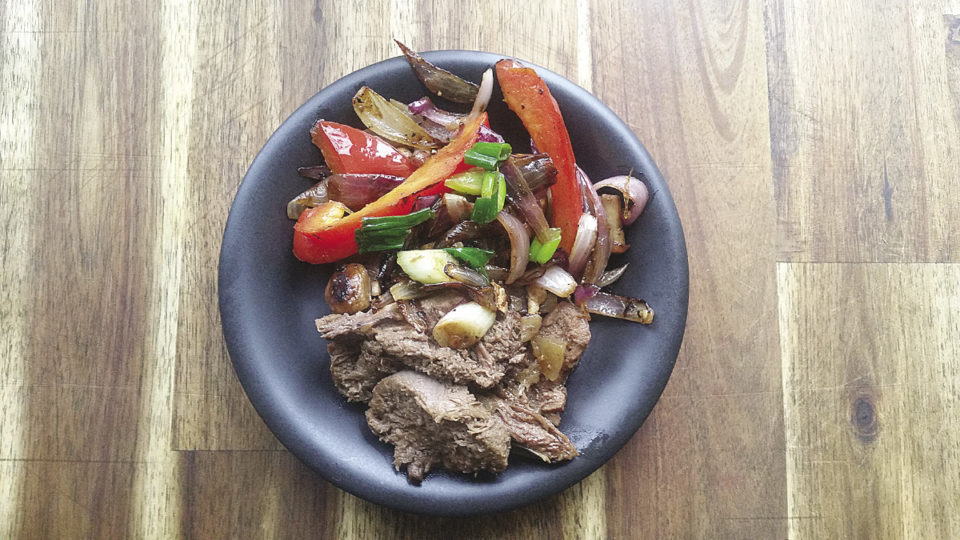As a dog owner I have noticed a growing, often confusing selection of pet foods on the market. From single-source protein diets to raw food, the pet food industry appears to have taken a sophisticated turn from grocery store kibble supplemented with grains and unfamiliar additives.
Brand preferences aside, a key ingredient in most pet foods is offal—the internal organs and entrails of butchered animals. These and other byproducts of meat processing contain the nutrients animals crave for optimal health.
But is offal just food for the dogs, and is there a message here for humans?
Growing up in a family with close ties to our European ancestry, I was exposed to a sense of appreciation for using more of the whole animal. My mother, who considers wasting food tantamount to a biblical sin, occasionally stews beef tripe in tomatoes, a dish she enjoyed in a household with roots in pastoral Southern Italy. After every Thanksgiving dinner, she puts the turkey straight into a stock pot and lets it simmer well into the evening (poultry is known for high contents of collagen). Both of my parents love to cook breaded liver and onions, and my dad was raised in a family that roasted beef tongue on a weekly basis.
“You used to be able to find it everywhere,” recalls my grandfather, who lived in a time when this kind of food was widely available and an economical choice for feeding a large family. Roasted beef tongue for dinner, leftovers in sandwiches for lunch the next day.
While offal meats may not look pretty, they hold their beauty on the inside. Science tells us that many organs contain vitamins and minerals essential for human health. Beef tongue, for instance, is packed with zinc which supports the body’s immune system and plays a vital role in cell generation and wound healing. It is also exceptionally rich in B-complex vitamins and especially B-12, which maintains healthy blood, nervous system and brain function.
And yet, North American supermarkets, restaurants, and therefore our home kitchens have largely steered away from the culinary use of obscure variety meats—it is niche at best. Consequently, we’ve become culturally-adverse to little else than the tidy aesthetic of muscle meats with the occasional bone-in packaging.
During a visit to pick up pastured beef from a family farm in the Slate River Valley outside of Thunder Bay, I asked about the availability of less-common cuts of meat. The wife of the farming couple led me to a large chest freezer and reached into her stockpile of unwanted animal parts.
“Most people aren’t interested in these,” she said, as she fixed me a paper bag of oxtail, liver and tongue.
The good news is, with a bit of curiosity we don’t have to look very far for inspiration to familiarize ourselves with these lesser-loved parts of the whole animal. Haggis, the national dish of Scotland, is a savory pudding comprised of sheep’s intestines and offal mixed with onions, oats, suet, salt, stock and spices traditionally blended together inside of a sheep’s stomach. From the home kitchen to the neighborhood pub, haggis is still celebrated in Scottish culture and can even be found in tins on supermarket shelves.
If you’re willing to try beef tongue or any unusual cut of meat, contacting a local farm, butcher or the nearest abattoir should yield promising leads. You may want to consider quality and opt for grass-fed beef or free-range chicken. Here’s a simple recipe for cooking beef tongue that’s popular in Latin America. The result is a tender, soft meat that could easily double as brisket. For the price and the satisfaction of using more of the animal, you may be converted—maybe even inspired to try something a little different for Christmas dinner.
Slow Cooker Beef Lengua (Beef Tongue)
Adapted from Vianney Rodriguez
Ingredients
1 beef tongue
1 onion, coarsely chopped
2 garlic cloves
Salt and pepper, to taste
1 bay leaf
1 beef bouillon cube
Thoroughly rinse the beef tongue and place in a slow cooker. Season generously with salt and pepper, then add onion, garlic, bouillon and bay leaf. Add enough water to nearly cover the tongue and cook on low for 8 hours or until tender when pierced with a knife.
Carefully remove the tongue from the slow cooker and place on a cutting board. With a paring knife, remove the skin and cut the meat into thin slices. Serve with potatoes drizzled in jus from the slow cooker.
In Mexico, lengua is served in warm tacos with chopped onion, tomato, cilantro and wedges of lime.




